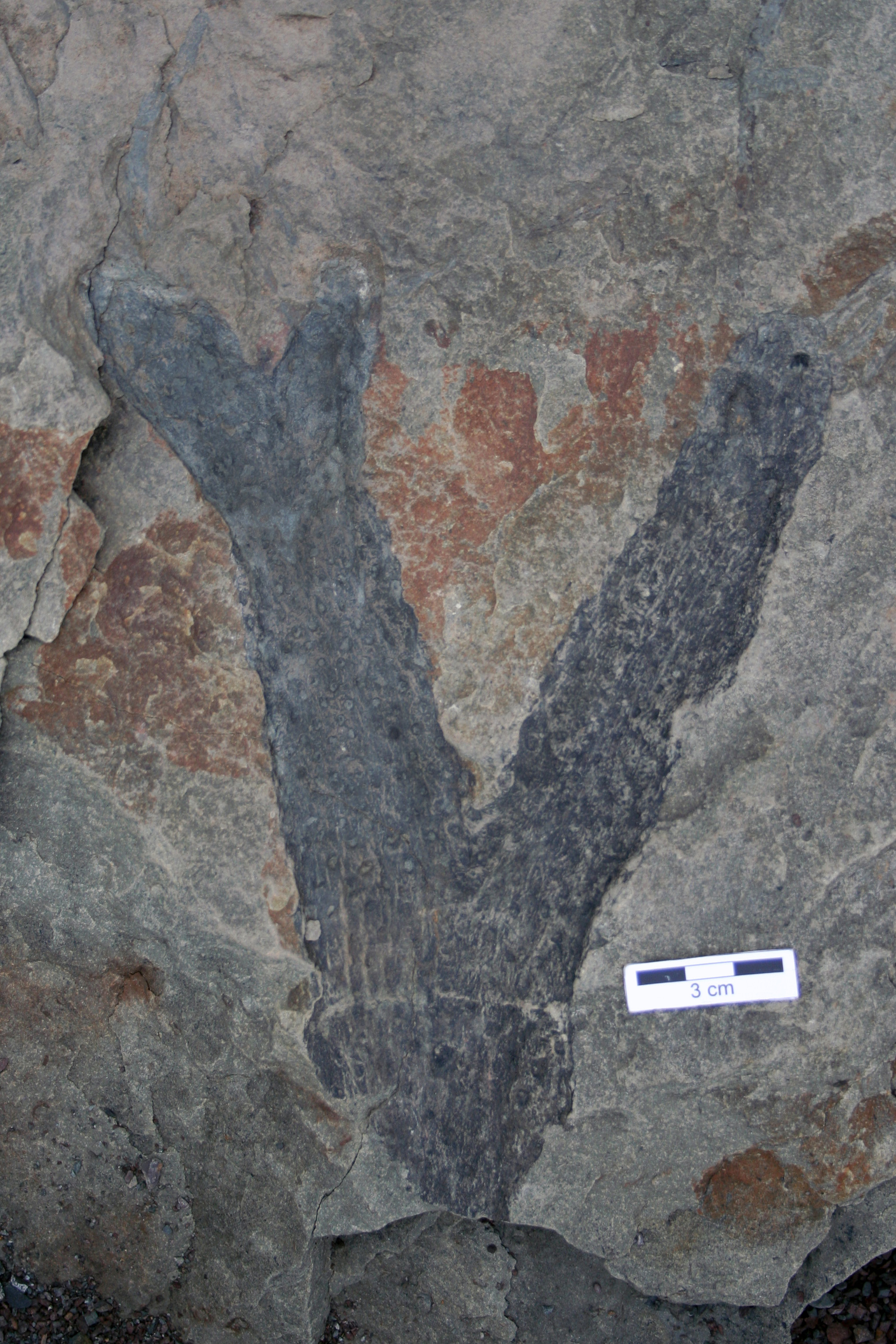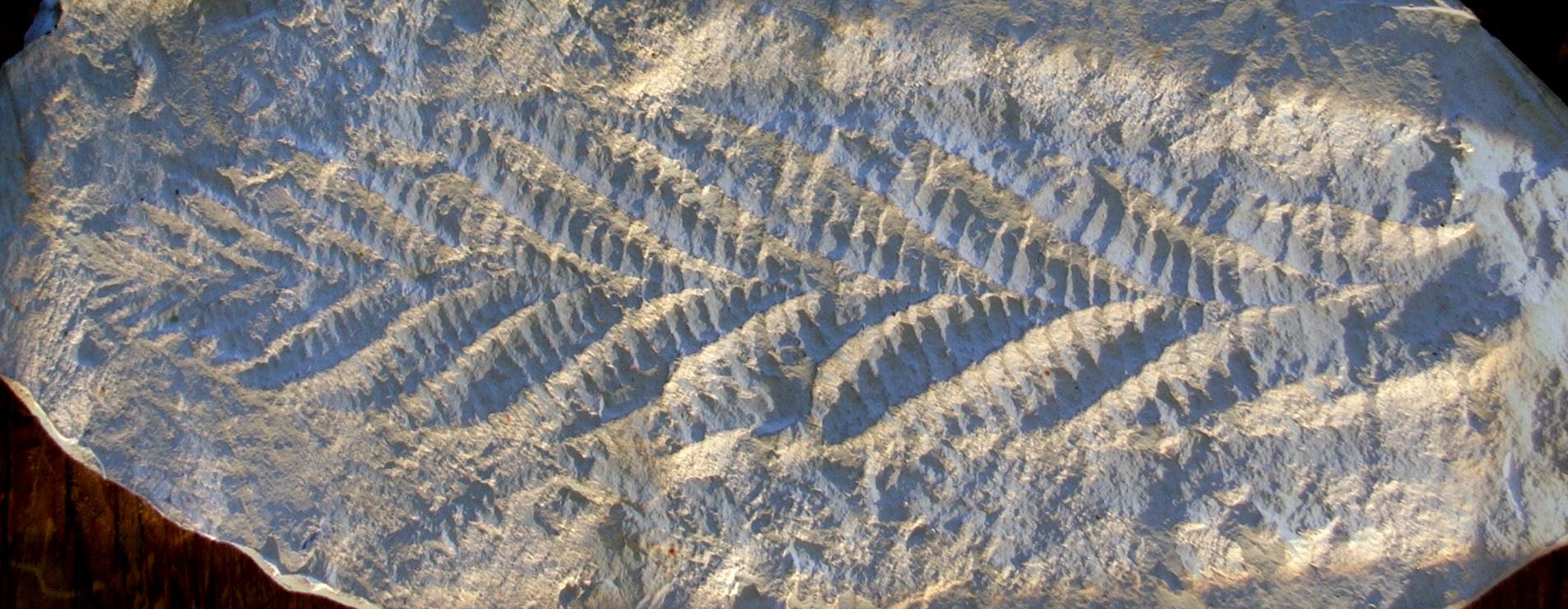|
Stigmaria
''Stigmaria'' is a form taxon for common fossils found in Carboniferous rocks. They represent the underground rooting structures of arborescent lycophytes such as ''Sigillaria'' and '' Lepidodendron'' under the order '' Lepidodendrales.'' Description and morphology Overview The Paleozoic swamps had tree-like lycopsids that grew up to , and even in height. These lycopsid plants were anchored by an extensive network of branching underground structures with root-like appendages attached to them. The underground organs or structures of these lycopsids is referred to as ''Stigmaria''. Lycopsids first evolved during a rapid diversification of terrestrial land plants in the Devonian period and became common plants within the Carboniferous coal forest flora. Lycopsids grew in low-level swampy wetland areas which they flourished during the Pennsylvanian age.Cleal, C. J. & Thomas, B. A. (2005). "Palaeozoic tropical rainforests and their effect on global climates: is the past the k ... [...More Info...] [...Related Items...] OR: [Wikipedia] [Google] [Baidu] |
Stigmaria Fossil Root In Sandstone (Pottsville Group, Middle Pennsylvanian; Frazeysburg Pit, Muskingum County, Ohio, USA) 5 (28407351158)
''Stigmaria'' is a form taxon (botany), form taxon for common fossils found in Carboniferous rocks. They represent the underground rooting structures of arborescent lycophytes such as ''Sigillaria'' and ''Lepidodendron'' under the order ''Lepidodendrales.'' Description and morphology Overview The Paleozoic swamps had tree-like lycopsids that grew up to , and even in height. These lycopsid plants were anchored by an extensive network of branching underground structures with root-like appendages attached to them. The underground organs or structures of these lycopsids is referred to as ''Stigmaria''. Lycopsids first evolved during a Silurian-Devonian Terrestrial Revolution, rapid diversification of terrestrial land plants in the Devonian period and became common plants within the Carboniferous coal forest flora. Lycopsids grew in low-level swampy wetland areas which they flourished during the Pennsylvanian age.Cleal, C. J. & Thomas, B. A. (2005). "Palaeozoic tropical rainfor ... [...More Info...] [...Related Items...] OR: [Wikipedia] [Google] [Baidu] |
Lepidodendrales
Lepidodendrales (from the Greek for "scale tree") or arborescent lycophytes are an extinct order of primitive, vascular, Heterospory, heterosporous, arborescent (tree-like) plants belonging to Lycopodiopsida. Members of Lepidodendrales are the best understood of the fossil lycopsids due to the vast diversity of Lepidodendrales specimens and the diversity in which they were preserved; the extensive distribution of Lepidodendrales specimens as well as their well-preservedness lends paleobotanists exceptionally detailed knowledge of the coal-swamp giants’ reproductive biology, vegetative development, and role in their paleoecosystem. The defining characteristics of the Lepidodendrales are their secondary xylem, extensive periderm development, three-zoned Cortex (botany), cortex, rootlike appendages known as stigmarian rootlets arranged in a spiralling pattern, and megasporangium each containing a single functional megaspore that germinates inside the sporangium. Many of these differe ... [...More Info...] [...Related Items...] OR: [Wikipedia] [Google] [Baidu] |
Joggins Formation
The Joggins Formation is a Formation (geology), geologic formation in Nova Scotia. It preserves fossils dating back to the Westphalian stage or Moscovian (Carboniferous), Moscovian stage of the Upper Carboniferous Period (geology), period or Pennsylvanian (geology), Pennsylvanian Period (geology), period, including ''Hylonomus'', the earliest known reptile. In addition to fossils, the Joggins Formation was a valuable source of coal from the 17th century until the mid-20th century. The Joggins Formation's spectacular coastal Outcrop, exposure, the Joggins#Joggins Fossil Cliffs, Joggins Fossil Cliffs at Coal Mine Point, was named a UNESCO World Heritage Site in 2008. History Early mining Prior to European colonization, the Joggins Formation and surrounding territory was part of the Miꞌkmaꞌki, the traditional homeland of the Mi'kmaq nation. French colonization city of the Bay of Fundy began in 1604. Acadian miners from Beaubassin were the first Europeans to mine the cliffs ... [...More Info...] [...Related Items...] OR: [Wikipedia] [Google] [Baidu] |
Lepidodendron
''Lepidodendron'' is an extinct genus of primitive lycopodian vascular plants belonging the order Lepidodendrales. It is well preserved and common in the fossil record. Like other Lepidodendrales, species of ''Lepidodendron'' grew as large-tree-like plants in wetland coal forest environments. They sometimes reached heights of , and the trunks were often over in diameter. They are often known as "scale trees", due to their bark having been covered in diamond-shaped leaf-bases, from which leaves grew during earlier stages of growth. However, they are correctly defined as arborescent lycophytes. They thrived during the Carboniferous Period (358.9 to 298.9 million years ago), and persisted until the end of the Permian around 252 million years ago. Sometimes erroneously called "giant club mosses", the genus was actually more closely related to modern quillworts than to modern club mosses. In the form classification system used in paleobotany, ''Lepidodendron'' is both used for th ... [...More Info...] [...Related Items...] OR: [Wikipedia] [Google] [Baidu] |
Sigillaria
''Sigillaria'' is a genus of extinct, spore-bearing, Lepidodendrales, arborescent lycophyte, known from the Carboniferous and Permian periods. It is related to the more famous ''Lepidodendron'', and more distantly to modern Isoetes, quillworts. Fossil records This genus is known in the fossil records from as early as the Middle Devonian or the Late Carboniferous period but dwindled to extinction in the Cisuralian, Early Permian period (age range: from 383.7 to 254.0 million years ago). Fossils are found in Great Britain, United States, Canada, China, Korea, Tanzania and Zimbabwe. Description ''Sigillaria'' was a tree-like plant reaching a height up to , and lycopsids were capable to reach a height of up to . These lycopsids had a tall, single or occasionally forked trunk that lacked wood. Support came from a layer of closely packed leaf bases just below the surface of the trunk, while the center was filled with pith. The long, thin grasslike leaves were attached directly ... [...More Info...] [...Related Items...] OR: [Wikipedia] [Google] [Baidu] |
Carboniferous
The Carboniferous ( ) is a Geologic time scale, geologic period and System (stratigraphy), system of the Paleozoic era (geology), era that spans 60 million years, from the end of the Devonian Period Ma (million years ago) to the beginning of the Permian Period, Ma. It is the fifth and penultimate period of the Paleozoic era and the fifth period of the Phanerozoic eon (geology), eon. In North America, the Carboniferous is often treated as two separate geological periods, the earlier Mississippian (geology), Mississippian and the later Pennsylvanian (geology), Pennsylvanian. The name ''Carboniferous'' means "coal-bearing", from the Latin ("coal") and ("bear, carry"), and refers to the many coal beds formed globally during that time. The first of the modern "system" names, it was coined by geologists William Conybeare (geologist), William Conybeare and William Phillips (geologist), William Phillips in 1822, based on a study of the British rock succession. Carboniferous is the per ... [...More Info...] [...Related Items...] OR: [Wikipedia] [Google] [Baidu] |
Carboniferous Plants
The Carboniferous ( ) is a geologic period and system of the Paleozoic era that spans 60 million years, from the end of the Devonian Period Ma (million years ago) to the beginning of the Permian Period, Ma. It is the fifth and penultimate period of the Paleozoic era and the fifth period of the Phanerozoic eon. In North America, the Carboniferous is often treated as two separate geological periods, the earlier Mississippian and the later Pennsylvanian. The name ''Carboniferous'' means "coal-bearing", from the Latin ("coal") and ("bear, carry"), and refers to the many coal beds formed globally during that time. The first of the modern "system" names, it was coined by geologists William Conybeare and William Phillips in 1822, based on a study of the British rock succession. Carboniferous is the period during which both terrestrial animal and land plant life was well established. Stegocephalia (four-limbed vertebrates including true tetrapods), whose forerunners (tetrapodomor ... [...More Info...] [...Related Items...] OR: [Wikipedia] [Google] [Baidu] |
Joggins
Joggins is a rural community located in western Cumberland County, Nova Scotia, Canada. On July 7, 2008 a 15-km length of the coast constituting the Joggins Fossil Cliffs was officially inscribed on the World Heritage List.UNESCO portal History The area was known to the as "Chegoggins" meaning place of the large fish weir, a name modified by French and English settlers to Joggins. Situated on the Cumberland Basin, a sub-basin of the |
Form Taxon (botany)
Form classification is the classification of organisms based on their morphology, which does not necessarily reflect their biological relationships. Form classification, generally restricted to palaeontology, reflects uncertainty; the goal of science is to move "form taxa" to biological taxa whose affinity is known. Form taxonomy is restricted to fossils that preserve too few characters for a conclusive taxonomic definition or assessment of their biological affinity, but whose study is made easier if a binomial name is available by which to identify them. The term "form classification" is preferred to "form taxonomy"; taxonomy suggests that the classification implies a biological affinity, whereas form classification is about giving a name to a group of morphologically-similar organisms that may not be related. A "parataxon" (not to be confused with parataxonomy), or "sciotaxon" (Gr. "shadow taxon"), is a classification based on incomplete data: for instance, the larval stage ... [...More Info...] [...Related Items...] OR: [Wikipedia] [Google] [Baidu] |
Vascular Cambium
The vascular cambium is the main growth tissue in the stems and roots of many plants exhibiting secondary growth, specifically in dicots such as buttercups and oak trees, gymnosperms such as pine trees, as well as in certain other vascular plants. It produces secondary xylem inwards, towards the pith, and secondary phloem outwards, towards the bark. Generally, more secondary xylem is produced than secondary phloem. In herbaceous plants, it occurs in the vascular bundles which are often arranged like beads on a necklace forming an interrupted ring inside the stem. In woody plants, it forms a cylinder of unspecialized meristem cells, as a continuous ring from which the new tissues are grown. Unlike the xylem and phloem, it does not transport water, minerals or food through the plant. Other names for the vascular cambium are the main cambium, wood cambium, or bifacial cambium. Occurrence Vascular cambia are found in all seed plants except for five angiosperm lineages whi ... [...More Info...] [...Related Items...] OR: [Wikipedia] [Google] [Baidu] |
Prehistoric Lycophytes
Prehistory, also called pre-literary history, is the period of human history between the first known use of stone tools by hominins million years ago and the beginning of recorded history with the invention of writing systems. The use of symbols, marks, and images appears very early among humans, but the earliest known writing systems appeared years ago. It took thousands of years for writing systems to be widely adopted, with writing having spread to almost all cultures by the 19th century. The end of prehistory therefore came at different times in different places, and the term is less often used in discussing societies where prehistory ended relatively recently. It is based on an old conception of history that without written records there could be no history. The most common conception today is that history is based on evidence, however the concept of prehistory hasn't been completely discarded. In the early Bronze Age, Sumer in Mesopotamia, the Indus Valley Civilis ... [...More Info...] [...Related Items...] OR: [Wikipedia] [Google] [Baidu] |
Devonian
The Devonian ( ) is a period (geology), geologic period and system (stratigraphy), system of the Paleozoic era (geology), era during the Phanerozoic eon (geology), eon, spanning 60.3 million years from the end of the preceding Silurian period at million years ago (Megaannum, Ma), to the beginning of the succeeding Carboniferous period at Ma. It is the fourth period of both the Paleozoic and the Phanerozoic. It is named after Devon, South West England, where rocks from this period were first studied. The first significant evolutionary radiation of history of life#Colonization of land, life on land occurred during the Devonian, as free-spore, sporing land plants (pteridophytes) began to spread across dry land, forming extensive coal forests which covered the continents. By the middle of the Devonian, several groups of vascular plants had evolved leaf, leaves and true roots, and by the end of the period the first seed-bearing plants (Pteridospermatophyta, pteridospermatophyt ... [...More Info...] [...Related Items...] OR: [Wikipedia] [Google] [Baidu] |









